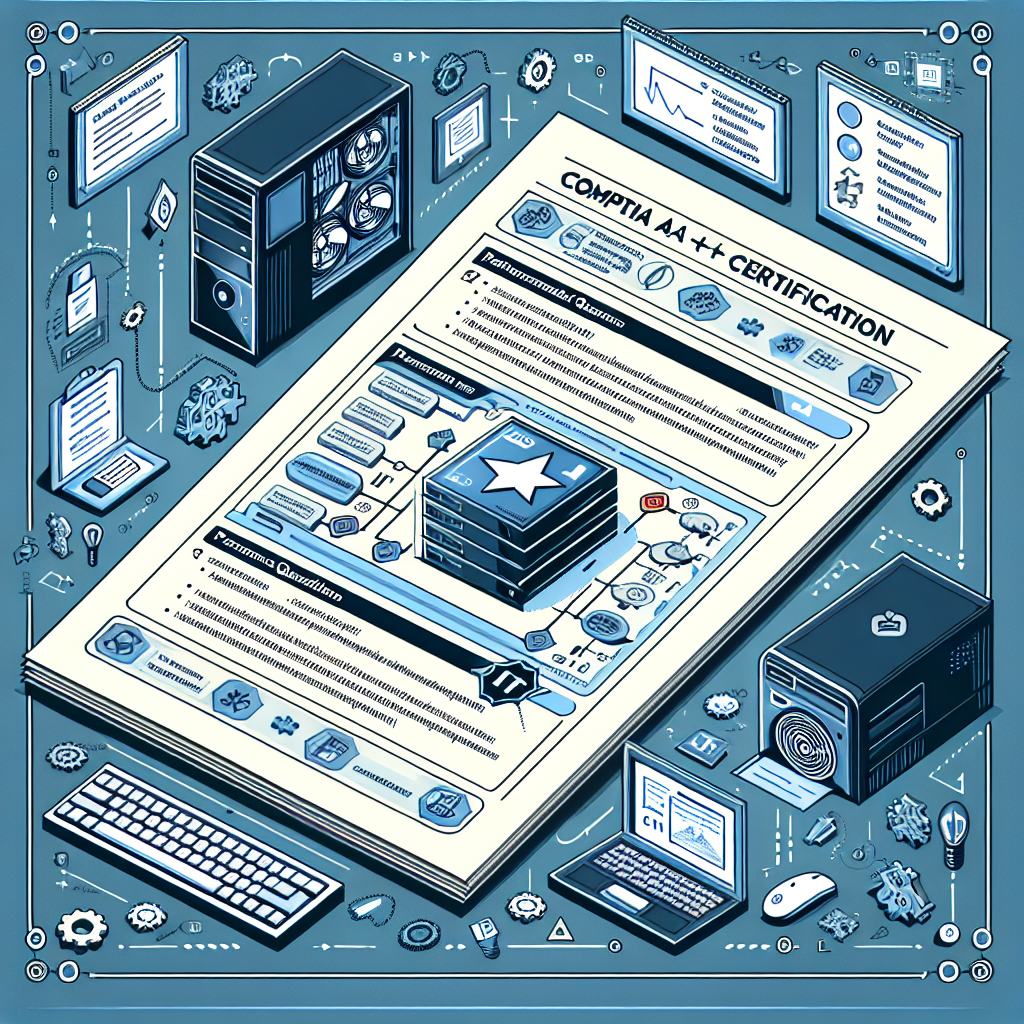A comprehensive guide to excelling in CompTIA A+ performance-based questions, covering essential strategies, tips, and resources for success.
The CompTIA A+ certification is a fundamental credential for IT professionals that validates understanding of computer hardware and software. An integral component of the exam is the Performance-Based Questions (PBQs), which assess the ability to solve problems in a simulated environment.
This article will guide you through mastering these questions, providing step-by-step instructions to prepare effectively.
Understanding the Structure of CompTIA A+ Performance-Based Questions
Performance-based questions require candidates to perform tasks or solve problems in a simulated environment. Unlike traditional multiple-choice questions, PBQs test hands-on skills and real-world problem-solving abilities. Understanding their structure is key to mastering them.
Steps to Master CompTIA A+ Performance-Based Questions
- Step 1: Get Familiar with the Exam Objectives
- Before diving into the specifics of PBQs, review the CompTIA A+ exam objectives thoroughly. These objectives outline the topics covered on the exam, including those likely to be part of the PBQs. Familiarize yourself with each objective to ensure comprehensive understanding.
- Step 2: Understand the PBQ Formats
- PBQs may present as drag-and-drop, simulations, or command-line interfacing tasks. It's crucial to be comfortable with these formats. Utilize training resources that include these kinds of interactive elements to gain familiarity with the environment and task types you will encounter.
- Step 3: Emphasize Practical Experience
- Hands-on experience is invaluable. Engage in practical exercises that mimic real-world scenarios you may encounter on the exam. Build a computer, install an operating system, or configure networking settings. Practical experience will help reinforce your understanding and improve your problem-solving speed during the exam.
- Step 4: Use Practice Tests
- Incorporate practice tests into your study regimen, especially those that include PBQs. These tests will help you understand how questions are framed and give you a feel for the timing needed to solve these questions under exam conditions.
- Step 5: Manage Your Time Effectively
- During the exam, PBQs will typically be encountered at the beginning. However, it's advisable to skip them initially and complete all the multiple-choice questions first. PBQs require more time, and managing your time wisely will ensure that you are not rushed while tackling these complex questions.
- Step 6: Read Questions Carefully
- When addressing PBQs, read the question carefully to understand exactly what is required. Note keywords and make sure you are clear about the task objectives. Misunderstanding the question can lead to incorrect actions and wasted time.
- Step 7: Use Standard Procedures and Best Practices
- Employ standard procedures and best practices as you work through the PBQs. Whether configuring a network or troubleshooting a hardware issue, following established protocols will guide you to the correct solution more efficiently.
- Step 8: Review and Double-Check Your Work
- Once you complete a PBQ, take the time to review your work before finalizing your answer. Ensure you have met all the requirements of the question and that every part of the task has been addressed. Reviewing your work can prevent simple mistakes and improve your score.
- Step 9: Stay Calm and Focused
- The pressure of solving complex PBQs under timed conditions can be overwhelming. It’s important to stay calm and maintain focus. Manage anxiety and stress by practicing relaxation techniques like deep breathing before and during the exam.
- Step 10: Gather Feedback and Continue Practicing
- After taking practice exams, gather feedback on your performance, especially on PBQs. Identify areas of weakness and work on them specifically. Continual practice is crucial as it helps solidify what you have learned and improves your problem-solving speed and accuracy.
By following these steps, you will enhance your ability to perform well on the CompTIA A+ Performance-Based Questions. The key is to understand what is expected, practice effectively, and approach the exam with confidence. Remember, thorough preparation is the best way to ensure success on the CompTIA A+ exam and in your future IT career.




